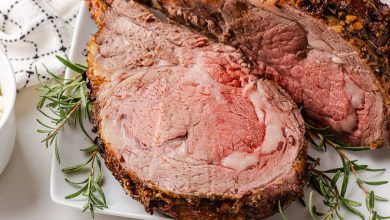Butterbur (Cooked, Blanched, Dried with Salt) – Nutritional Information
Description:
Butterbur, when cooked, blanched, and dried with a touch of salt, provides a unique addition to any dish. This plant, known for its medicinal properties, is low in calories and packed with a modest amount of nutrients, making it an excellent choice for those looking to enhance their meals with an earthy, flavorful vegetable.
Nutritional Information per 100g
| Nutrient | Amount |
|---|---|
| Energy | 8 kcal |
| Protein | 0.23 g |
| Saturated Fat | 0.0 g |
| Total Fat | 0.02 g |
| Carbohydrates | 2.16 g |
| Fiber | 0.0 g |
| Sugar | 0.0 g |
| Calcium | 59.0 mg |
| Iron | 0.1 mg |
| Magnesium | 8.0 mg |
| Phosphorus | 7.0 mg |
| Potassium | 354.0 mg |
| Sodium | 240.0 mg |
| Zinc | 0.09 mg |
| Copper | 0.059 mcg |
| Manganese | 0.156 mg |
| Selenium | 0.9 mcg |
| Vitamin C | 18.9 mg |
| Thiamin (Vitamin B1) | 0.01 mg |
| Riboflavin (Vitamin B2) | 0.01 mg |
| Niacin (Vitamin B3) | 0.1 mg |
| Vitamin B6 | 0.052 mg |
| Folate | 4.0 mcg |
| Vitamin B12 | 0.0 mcg |
| Vitamin A | 1.0 mcg |
| Vitamin E | 0.0 mg |
| Vitamin D2 | 0.0 mcg |
Allergen Information
Butterbur is generally safe for most individuals when prepared correctly. However, it’s important to note that people with allergies to other members of the Asteraceae family (such as ragweed, daisies, marigolds, or chrysanthemums) may also have allergic reactions to butterbur. Always ensure that it’s prepared in a safe and hygienic environment to avoid contamination with other allergens.
Dietary Preferences
- Vegan: Suitable for a vegan diet.
- Gluten-Free: Naturally gluten-free, making it a great option for those with celiac disease or gluten sensitivities.
- Low Calorie: With only 8 kcal per 100g, butterbur is an excellent addition to calorie-conscious diets.
- Low Fat: Contains minimal fat, making it a suitable ingredient for low-fat diets.
- Rich in Potassium and Vitamin C: Ideal for individuals looking to boost their intake of potassium and vitamin C.
Health Benefits & Cooking Tips
Butterbur is rich in a variety of minerals, including potassium, calcium, and magnesium, which contribute to maintaining healthy bones, muscles, and heart function. It is also a good source of vitamin C, an antioxidant that helps support the immune system and skin health. The plant’s low-calorie and low-fat content makes it a great choice for those managing their weight or seeking nutrient-dense yet light ingredients.
When preparing butterbur, it’s essential to cook it thoroughly to remove any bitterness and ensure it’s easy to digest. Blanching and drying the leaves with a touch of salt can enhance the flavor, providing a savory addition to soups, salads, or stews. You can also enjoy it as a side dish or even mix it with other greens for a unique salad base.
Conclusion
Butterbur, cooked and blanched with salt, offers a mild, earthy taste combined with a rich profile of vitamins and minerals. Its versatility makes it a fantastic ingredient for health-conscious individuals or those looking to diversify their vegetable intake. Whether you are looking to add flavor, nutrition, or both, butterbur is an excellent, often overlooked choice for your next culinary adventure.










